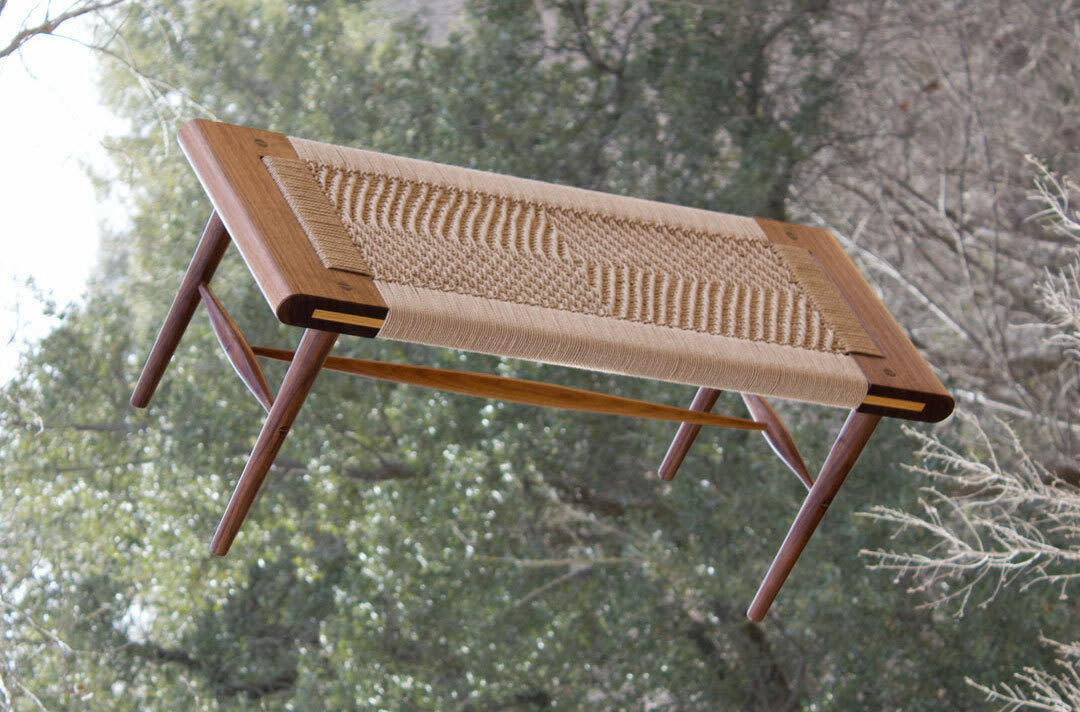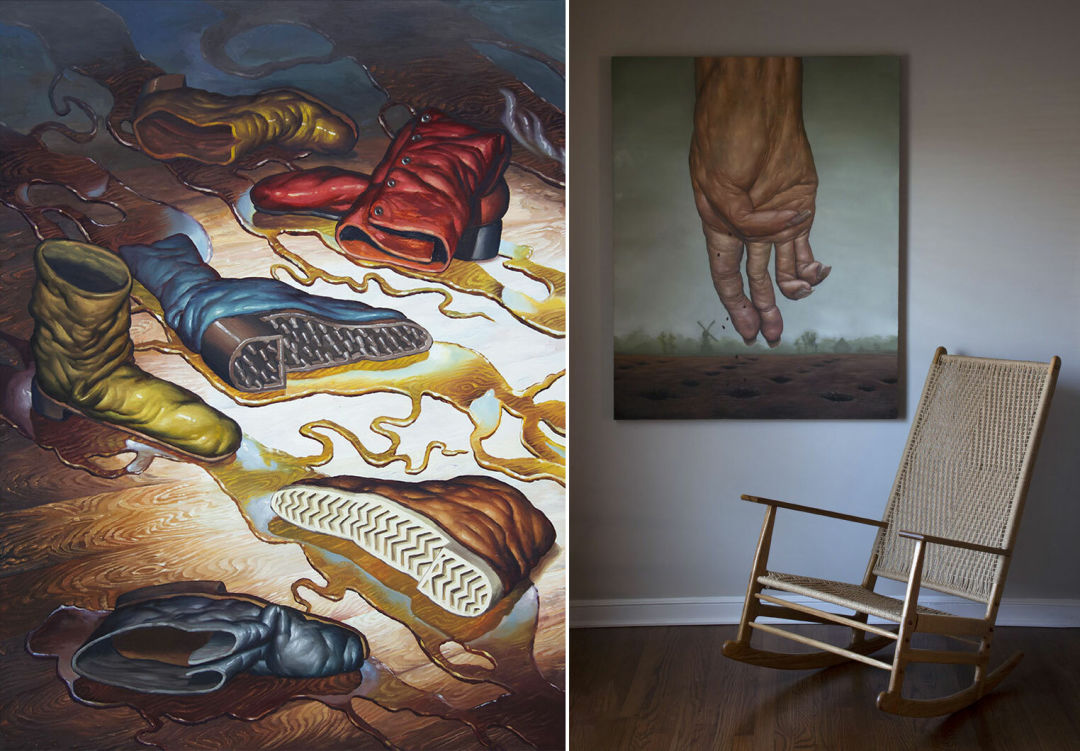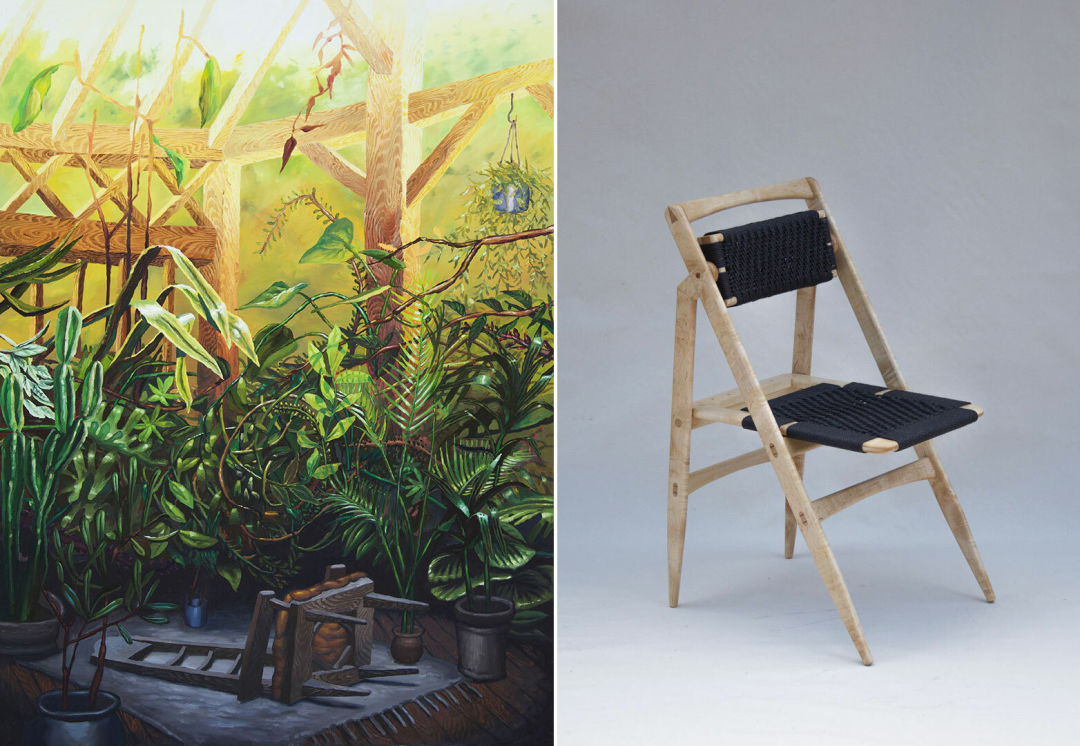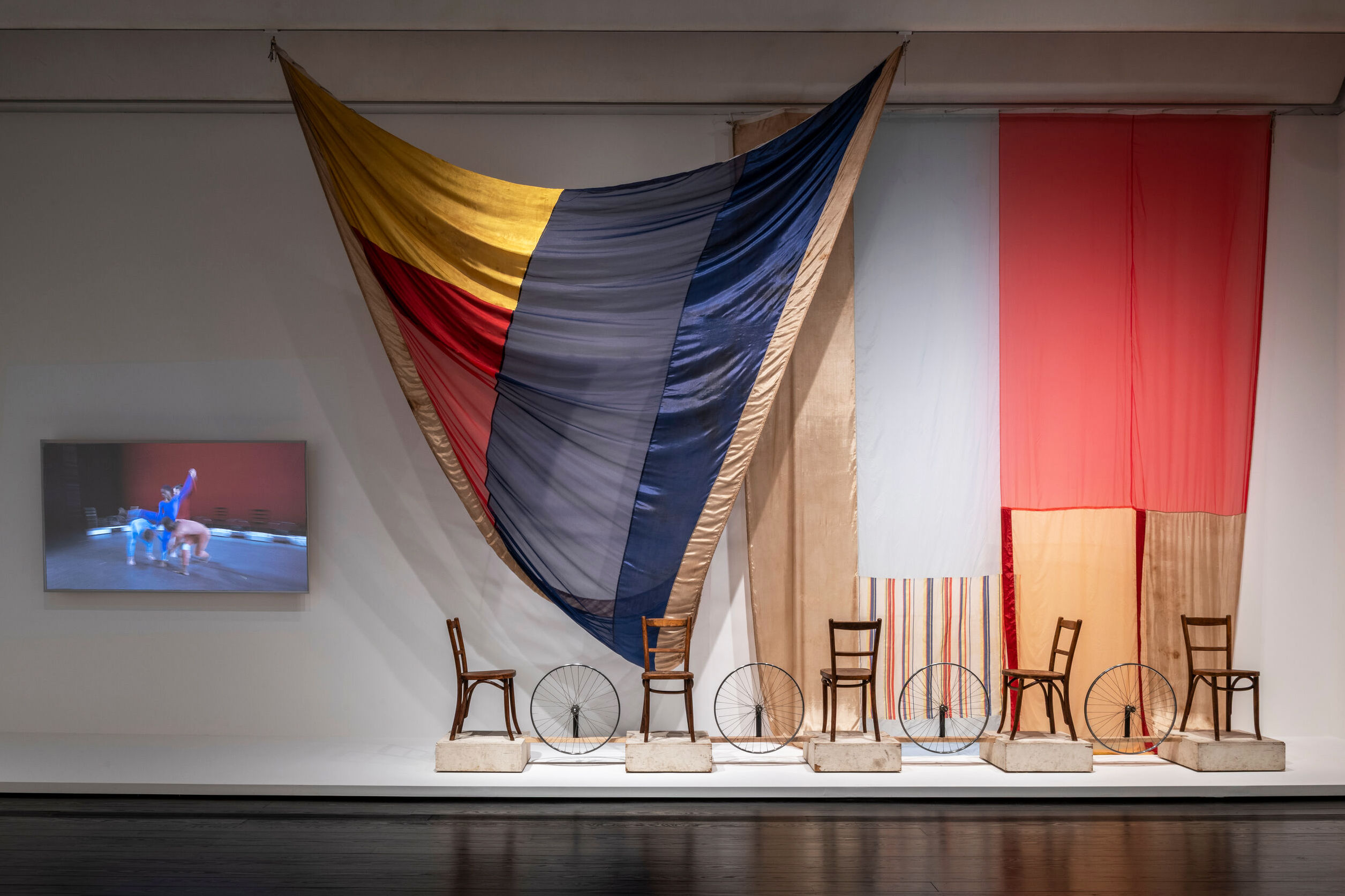The Quirky Sensibilities of Artist Seth Alverson

Image: Devin Finch
Seth Alverson grew up in the suburbs of Spring, graduated from the University of Houston in 2002, and, painting degree in hand, took a job at Texas Art Supply on Montrose Boulevard in the paper department. Still today he claims you can find the marks from where he and coworkers threw pencils and thumbtacks that stuck into the ceiling.
"It's still exactly the same," he says. "It's really cool. I hope that place never goes out of business."
Alverson continued painting while moving between Texas and California, and finally ended up in Charlotte, North Carolina, for his wife's work. When the couple's daughter was born three and a half years ago, Alverson turned his focus to woodworking, developing his own sense of everyday furniture, such as cabinets, or a changing table, or reimagining toys like a doll house or a wagon. This was one part artistic fire, another in order to avoid spending money the family didn't have on "cheap plastic stuff." He recently sat down with Houstonia to discuss his work.
Are you developing any woodworking series or are they all one-offs?
Everything on my website has been a one-off build so far. If you buy what's in the picture, that's what you get. But I have the plans for all of them. The next step is going to be isolating what I can make to order so someone could pick colors or the type of wood they want. I don't know where I'm going to [source the wood] though. When I was in Texas I had a great place in Fort Worth where I was able to get everything. Out here in Charlotte, despite all the trees, there's not a lot of easy, ready-to-go lumber. There are lumber yards. But they require a lot of milling and big tools to get everything down to dimension. I don't have any of those tools. I only work with hand tools.
I can always saw a branch off a tree and make a chair. I've done that plenty of times.

One of Alverson's many wood bench creations, this one made out of walnut and ash.
Image: Courtesy Seth Alverson
Your woodwork centers on clean lines, whereas your paintings have an organic quality. Objects often seem to be melting, out of sorts. How do you describe the difference?
A lot of people assume that I'm really interested in the grotesque, deformities, medical kind of stuff. That actually grosses me out. The reason my paintings look like that, sometimes, is because I'm describing what it looks like to feel a certain way—it's a visual description of the way I feel most of the time: busy, claustrophobic, sweaty.
A shoe and a body are part of the same sensibility; it's not necessarily about a shoe or a body part but about the way that thing makes you feel. That's the closest way I've been able to describe what I'm doing visually.
Does that make woodworking a different channel for communicating your internal senses?
Yeah, it does. I don't know quite how to articulate where exactly the artistic side of my woodworking comes from; it is the same place, but I have a different objective. It's not so much an expression—though it has everything to do with my body, what I need, very specific features you can't find—affordably—anywhere else.

Left: Wet Shoes (43" x 32"), oil on canvas, 2021. Right: Seed Sower (52" x 40"), oil on canvas, next to one of Alverson's rocking chairs.
Image: Courtesy Seth Alverson
You've been publishing drawings and paintings of halting domestic scenes: a cluttered basement, an empty dining room, an overgrown sunroom. Where's all this going?
All of the art on my website from the past year are illustrations for a book I'm working on. It's going to loosely be about somebody trying to find a place to live inside a disgusting and inadequate house. It'll be a blend of interiors and exteriors and landscapes. I only have a few more paintings to go and the thing's finished. Though, I haven't written the story yet.

Left: Sunroom (43" x 32"), oil on canvas. Right: a folding chair made of maple and woven with black Danish cord.
Image: Courtesy Seth Alverson
The material world seems to flow through your work more transparently than a lot of artists. Can you harken back to your time at University of Houston and what drove your painting then?
It's a good question. I lived with my parents so I have a lot of memories of sitting on the freeway in traffic—going to school and going all the way back home; I put 75 miles on my car every single day.
But if I wasn't in school I was just hanging out with my friends, going to the galleries on Colquitt or the MFA. This was 20 years ago: I remember going south on Montrose, where now the street goes over Highway 59. I remember going under Highway 59. Montrose was way dirtier then, too. Houston was a different place back then.
Editor's note: The conversation has been edited for clarity and flow.




